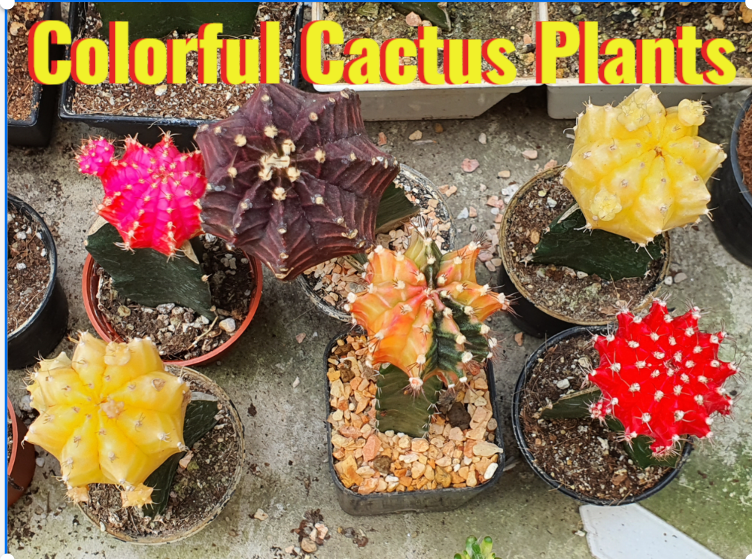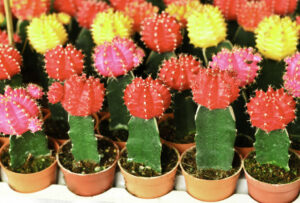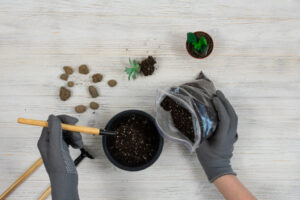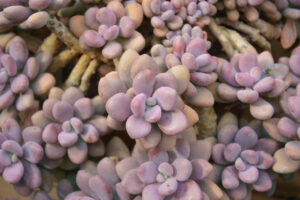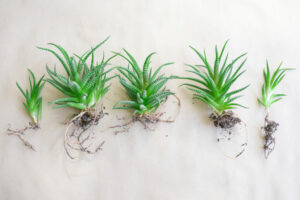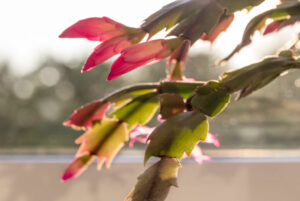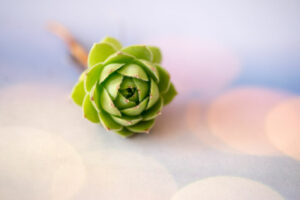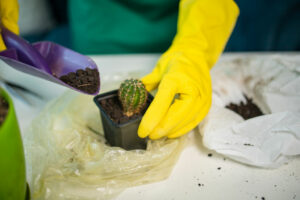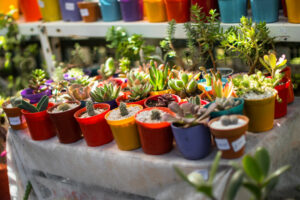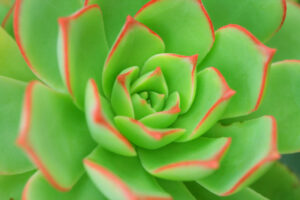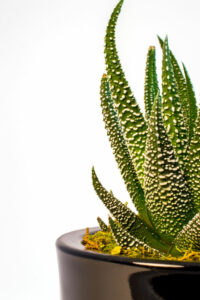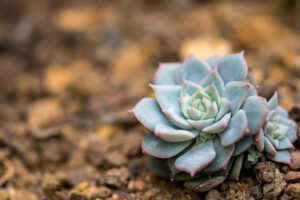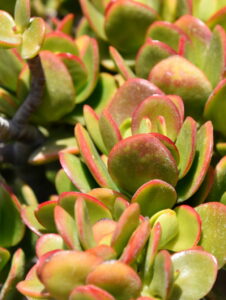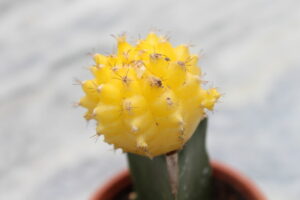HousePlantJoy is supported by our audience. When you purchase through one of our links, we may earn a small affiliate commission. As an Amazon Associate I earn from qualifying purchases. Your cost is not affected.
==================
7 Colorful Cactus Plants to Add to Your Home
Cactus and succulents are known for their charismatic vibe that attracts many houseplants collectors. It may be prickly, but there’s something so adorable about cacti and succulent that anyone can’t resist, especially its cuteness. However, in some cases, cactus and succulents differ. Not all succulents are cactus, and not all cactus are succulents. For this reason, that cactus mostly have areolas that produce spines and flowers. Meanwhile, succulents can stand harsh conditions because of their foliage that stores water. The reason why it is picked by most beginners. But whether you are an expert or a beginner, cacti and succulents are best for your household as it offers a variety of colorful plants that you can choose from.
In this article, we will help you to know some of the types of cute cactus and succulents and tips on how to grow and take care of them that will lead you to produce healthy and beautiful collections.
Colorful Cactus and Succulent Plant
Despite the differences, they still gained popularity among the houseplants collectors for their excellent characteristics, such as forming into significant iconic figures and easy and low maintenance plants. Moreover, its variety of colors is perfect for decorations that attract collectors to put it in their households, mainly in their windows, shelves, tables, etc.
Here are some colorful indoor cactus and indoor succulents plants that every person should look into. These plants can bring bright colors to your home, as they can match and beautify your home with just a little, and they are incredibly low-maintenance. Likewise, according to a study, having these plants in an office could enhance productivity by 15%.
1. Desert Gems by Costa Farms
First on the list is these Desert Gems by Costa Farms. These cacti are part of the Mammillaria Cactus family originating from Mexico. These easy-to-grow houseplants give a bright burst of color to your home décor. Perfect for decorating your tabletops or desktops, these colorful cactus plants are also ideal for adults and children because of their softer spines, making them less prickly than other cactus varieties.
It is also a slow-growing colorful cactus plant best for adults, especially for children, to nurture and take care of as it doesn’t require pruning. Plus, Desert Gems are great for your home or room as it filters air pollution, giving excellent ventilation and an advantage to our health. However, if you wonder if Desert Gems is a spray-painted cactus plant, it is not, so you don’t need to be wary of it anymore, it is safe and will thrive beautifully.
How to grow cactus?
Growing this cactus is possible through seedlings. Here are the following steps.
- First, you can plant the cactus seeds in mineral soil. Just a tip, cover the more giant seeds with the soil mix, and the smaller seeds can remain scattered on the topsoil.
- Second, find a pot. In terms of this, you can use a plastic pot temporarily.
- Then make sure to have a ziplock bag as this is where you will place your planted pot. Usually, about two inches per seed of the pot is the recommended size and the gallon bag.
- Next, add some water to the bag to cover the bottom few inches of the pot, not coming up above it when you sit it flat on the windowsill.
- Then, you can now put some fertilizer and close the bag. When the plants begin to rise through the soil mix, you already have the chance to place them in your preferred pot.
Taking care tips of Desert Gems plant
-
Water sparingly
Desert Gems is a colourful cactus plant that doesn’t need more water and is usually recommended to water them for 1 to 2 weeks as it is enough. You can also base your watering on its conditions; whether it needs more water or less, make sure that its potting mix is already dry to avoid rotting of roots. A little tip, keep its moisture for it to stay healthy.
-
Place near a window or a bright light
These indoor cactus love bright light, so it is essential to place them near a light source. It can also thrive in any place and have its shadows all day. But if your area has some difficulty in getting light, it is fine as Desert Gems can grow nicely with just artificial lights.
-
It does not require much fertilizer
This colorful cactus plant does not need fertilizer. Still, you can sprinkle a general-purpose houseplant fertilizer once or twice a year. You also do not need to trim these cacti, and they’re incredibly effortless to cultivate!
Benefits of Desert Gems Indoors
Desert Gem, a colorful cactus plants are excellent in helping purify the air in your office or home, which is great for your allergies, and such as this plant can absorb chemical compounds that our naked eye cannot see. This is also perfect if your room or space is contaminated with chemicals.
Furthermore, the cactus spines help protect themselves from harm, including humans and animals. Its roots collect water when it is not raining, and it stores the collected water in its body to use in the future, especially when the climate is very harsh.
2. Moonstones Pachyphytum Pink Succulent Plant
Another colorful cactus plant you should invest in is this Pachyphytum Pink Succulent. Pachyphytum Oviferum belongs to the Crassulaceae family, a succulent prostrate plant (woody plant) with white stems that produce pale blue-green to bluish-purple spherical leaves in a rosette at the stem tips. It can thrive up to 4 inches (10 cm) tall and 12 inches (30 cm) wide.
These colorful plants are a fantastic addition to anyone who loves pink and wants to try out gardening. Also, because of its eye-catching features along with its extraordinary and beautiful aesthetics, it is prevalent to be given as a houseplant gift; however, because of its delicate characteristics, it is necessary to deal with it with the utmost care, and there’s a possibility that its skin oil can affect the leaves’ opacity.
How to grow pink succulent plants?
Here are the following steps for planting a succulent
- First, you must divide the succulents into two methods to do this. You can choose plantlet removal or root separation. When we say plantlet removal, you will remove the sprung-up mini rooted plants that can grow on their own, while in the other one, you need to remove the entire plant slowly and its roots; after that, separate them gently.
- After dividing the succulents, you can now plant them in a pot with the right soil mix intended only for cacti and succulents or add some sand or other combinations, depending on your preference.
- Next, wait a day and water it sparingly around the soil.
Taking care tips of pink succulent plant
-
Let the soil dry first
Before watering the plant, always let the soil dry up entirely and prevent directly putting water on the leaves to avoid damage as it is susceptible to harm. Moreover, watering the leaves directly can lead to diseases that weaken plants. Plus, it may affect the plant’s health by rising temperatures, making them vulnerable to conditions such as mold.
-
Extra water needed for winter
Usually, the plants will demand extra water as the active growing season begins. For the pink moonstones, the growing season is during winter, so you have to keep in mind to water them. If you worry that it can harm the plant, you don’t have to, as it is normal for the moonstones. If you’re not confident about when to water your Pachyphytum, look for dryness on the lower leaves and water them then.
-
Sunlight Exposure
Pachyphytum needs a lot of light to thrive well, so it is necessary to place it in an area with great sunlight. Also, because it cannot withstand cold weather, it is essential to maintain your space warmth or temperature to 30 degrees. If you are cultivating your plants indoors, place this succulent on top of the windowsill to get maximum sunlight. Rotate the plant place every few days so that the plant will get sufficient sunlight evenly.
The best time to place this succulent is in the morning, where the sun shines brightest and speckled sunlight for the rest of the day if it is placed outdoors. If your area experiences harsh hot weather, put your plant in place with some shades to prevent the plants from having any sunburns.
Do succulents have health benefits?
Aside from putting aesthetics and great matches to your home as decorations, succulents also possess a lot of benefits. It will significantly help our lives and, most especially, our health. As you will know, some of the varieties of the succulents, such as aloe, provide medicinal properties. This could mainly help us with our cuts, stomachache, and any related illness.
Furthermore, if you are distracted by working or studying, this will help you concentrate and reduce your stress by actively interacting with indoor plants. Aside from that, edible succulents can be a great snack, such as yucca, pineapple, and sea beans that provide essential minerals and vitamins to our body, healthier than other foods.
3. Pink Christmas Cactus Plant- Zygocactus
Another colorful cactus plant that I recommend you get is the Christmas cactus plant. Although this plant is called a cactus, it is not one. But instead, it is succulent. The Christmas cactus is a tropical plant found in the South American jungles. The flowers bloom once a year and are available in various hues, including fuchsia, yellow, salmon, pink, white, orange, red, and combinations of these colors.
Christmas colorful cactus plants are easy to care for, and they are also easy to propagate. Unlike its name, this plant is quite sensitive to climate and keeps it from freezing. Schlumbergera or Christmas cactus needs to grow in pots or garden boxes in temperate latitudes as it cannot tolerate conditions below 50 degrees Fahrenheit (10 degrees Celsius °C).
How to grow Christmas Cactus Plant?
Usually, the Christmas cactus plant propagation takes place after its blooming through cuttings. Some of the step-by-step guides are the following.
- First, choose the young tips of the stems of the cactus.
- After cutting, make sure to dip them in powdered rooting agents.
- And plant cuttings in potting soil.
- Keep your cuttings in a well-lit place, with more or less 68 to 70° F (20 to 21° C).
Taking care tips of Christmas Cactus Plant
-
Temperature
Christmas cactus is a tropical plant that can tolerate warmth and low to moderate moisture levels. However, you should maintain a comfortable temperature of 65 degrees to 70 degrees Fahrenheit and avoid heat sources such as heaters, fireplaces, radiators, furnace ducts, etc., to prevent the plant from having damaged.
-
Water
Moisture is essential to every plant and likewise to the Christmas cactus. As you will know, this plant requires ample humidity while it is blooming, so you should frequently mist your plant to bloom nicely, but make sure not to overwater a plant and just keep it slightly moist to avoid root rotting.
-
Sunlight Exposure
Even though the Christmas cactus may adapt to low light, it will likely produce more blooms if exposed to brighter light. However, please remember that too much direct sunlight will burn the leaves of the Christmas cactus. So keeping it in a shaded area will avoid this to happen. Remember that too much is terrible, so take your plant to a place with average sun exposure to maintain its health and beauty.
-
Soil
Ideally, the Christmas cactus plant needs a soil mix full of organic matter with good drainage. It is perfect to use a high-quality cactus mix to give your plant nutrients. If you don’t know this, you can go to the nearest garden store in your locality and buy one. However, if you buy in an online store, make sure that it sells authentic garden items by researching first. But if you want to save for having a tight budget, you can make your soil mix at home.
-
Pruning
You can prune the Christmas cactus plant to encourage new growth once it blooms. Trimming the plant will also help it bloom better when new growth starts in the spring. Moreover, pruning your Christmas will give a bushier and fuller look after it blooms in its active growing season and not after late spring. To easily trim the plant, remove it or pinch off one or more sections depending on your liking and replant in separate pots to make new plants.
-
Fertilizer
Apply a diluted liquid houseplant fertilizer high in potassium 2 to 3 weeks after the new growth begins. Also, it is recommended to feed it with a 20-20-20 or 10-10-10 plant food diluted with water to 50% strength. Plus, fertilize the Christmas cactus plant with one teaspoon to 1 gallon of water once a month. But don’t apply the fertilizer during the same week you add the plant food.
-
Repotting
You should repot the cactus every 2 to 3 years or depending on how poor the soil quality is. Usually, the ideal time to repot your plants is during springtime. When you are repotting, make sure to remove the Christmas cactus from its pot, along with the surrounding soil ball, and gently loosen the plant roots. If in case the potting mix is compressed, gently rinse it away from the roots with a bit of water and plant it again in the new pot you prefer.
Is Christmas Cactus Plant a good gift?
Giving gifts to your loved ones, friends, or others might be somehow overwhelming and complicated as there are many things you might need to consider before buying. However, worry no more as cactus and succulents represent a great gift to anyone, likewise the Christmas cactus.
As you will know, Christmas cactus plant are easy to take care of, which is best for children, adults, beginners, or experts. It can also last for about 20 to 30 years or how you take care of it, which is good to hear. Aside from this, it possesses beautiful long green arms that stay for the whole year and bloom in the season of Christmas, which is very lovely. It will add excitement as Christmas fast approaches, way perfect for giving during the holiday period.
4. Colorful Succulent Assortment (12packs)
If you decide to obtain any of the cactus mentioned above, adding succulents to your space will make it look much more colorful and pleasing to the eyes. One item which I could recommend is these colorful succulents. It is called colorful succulents because of their vibrant colors that fascinate everyone. These succulents are affordable and of excellent quality too. Since succulents are such an easy plant to take care of, these are perfect for beginners.
Similarly, it is a good way of relieving your stress and anxiety and improving your concentration when you are working or studying. One thing that I have noticed after including colorful plants in my workspace is how it helps calm me whenever I am working or having a stressed day. Similarly, if you are feeling stressed or tired, caring for plants is one way to help ease the stress. Likewise, it can purify your home’s air pollution, which is best for people with allergies and severe illnesses. These succulents are also good as party favors for events like garden weddings or baby showers.
Types of Colorful Succulent
-
Euphorbia tirucalli
This succulent is typically known as sticks on fire, and it comes out just like what its common name indicates. When summer comes, its color unfolds as yellow, and for winter, it blushes in a deeper red color with straight stems that match like red pencils. This is perfect for adding some height when arranging a succulent plant.
-
Aeonium
Aeonium is a succulent with thick, glossy leaves organized around squat stems in a pattern of the rosette and delicate uprights. Likewise, aeonium comes in fascinating and eye-catching colors from red-edged to neon-gold and green and jet-black.
-
Haworthia attenuata
Zebra Howasia is a small plant with bright white, coarse, hard warts that form horizontal stripes on its dark green leaves. It is also a robust plant and can withstand almost all conditions except too much watering. Zebra howasia is only 4 inches high, but branching and prolific quickly fill a small container.
-
Echeveria
Like Aeonium, Echeveria is a bowl-sized rosette, a delicate succulent plant that grows low on the ground. In addition to various colors such as green leaves, maroon, and almost black leaves, there are multiple red, green, maroon, and pink colors.
-
Kalanchoe luciae
This plant is also known as a paddle plant as its leaves shape broad and flat like a paddle. Similarly, green leaves usually turn red around the edges and deeper when in direct sunlight and cool temperatures.
-
Crassula
This delicate succulent plant has different appearances and sizes depending on the species, many of which have fat, fleshy, bright red, or maroon leaves. The Crassula family includes the popular jade plant and offers the option of small, paddle-like succulent leaf clusters that look like small vertical pancakes.
Care tips for succulents
-
Water
These succulent plants require watering once every two to three weeks. A great tip is to wait for the soil to dry before watering the plant thoroughly to avoid damage as it is susceptible to harm, and the roots may rot if overwatering is achieved. Also, it can affect the plant color if water is more or less.
-
Sunlight
These succulents love a good amount of the sun. If you plan to place these plants indoors, please ensure they are near a light source like a window since it is essential to receive light at least half of the day. Aside from this, to achieve the colored succulent, you need to place it near sunlight as it will be a factor in producing stress.
-
Soil
When choosing the right soil type for your plant, you must select soil with good drainage. My recommendations would be to mix potting or cactus soil with perlite, sand, or pumice. Similarly, you can consult your nearest garden store in your area with this to ensure the full health of your succulent.
5. Yellow Moon Cactus Plant- Gymnocalycium Mihanovichii
This bright yellow colorful cactus plant, scientifically known as Gymnocalycium Mihanovichii, originates from South America. Moreover, this succulent plant always needs a host to survive as it cannot live independently, and it is often grafted onto a cactus and barely flowers. These moon cacti are available in a variety of colors. Still, my favorite one out of all of them is the yellow variant because of its happy and vibrant color.
Taking care tips of Yellow Moon Cactus
-
Sunlight
This colorful cactus plant love the sunlight! Placing them in sunny areas is thus a must. Finding the right balance of light is vital to helping your cacti grow healthy and strong. Too much sunlight can burn the plant, while too little sun will weaken the plant. So, if you are in an area that has extreme weather, be sure to place the plant in some shade in winter and place it indoors to avoid freezing and harm.
-
Soil
The perfect soil for this cactus is the quick-drying cactus mix. However, if you don’t have this yet, you can use the potting soil mix. It is also acceptable for moon cactus, or you can also put in perlite or coarse sand to the soil to improve its drainage. For best results, select a porous clay pot with drainage holes to drain excess water.
-
Water
It is essential to note that you should only water the soil once it is completely dry. Too much watering will not allow the oxygen to reach the plant’s roots. Similarly, this plant doesn’t require more water, so you don’t need to water it every day. Aside from this, if your place experiences frequent rainfall, be sure to put the plant indoors to avoid the rotting of roots and damage to the plant.
-
Fertilizer
Many gardeners recommend fertilizing moon cactus with a 1/4 teaspoon of 15-15-15 water-soluble fertilizer mixed into one gallon of water every week during the spring and summer. Apply fertilizer once a month instead of watering the plants. Applying fertilizer once per month will help your plants stay healthy.
Having these succulents lining your windowsill will give such a bright and warm feeling to your house. Likewise, provide benefits to your home, such as relieving your mind of any stressors and making you feel good.
6. Fat Plants Moon Cactus, Variety Pack of 4
If you want to buy more grafted moon cactus, this Pack of 4 Moon Cactus by Fat Plants will surely be for you. These colorful cactus plants are random in color, so you will have a little bit of surprise when your package gets shipped. The colors range from red, red-yellow, orange, pink, purple, and purple-red. Each plant comes in a 2.5-inch plastic pot which you can transfer to a container of your choice.
Like the yellow moon cactus mentioned above, these plants prefer bright light and well-draining soil. Always keep in mind to water only when the soil is completely dried out. These plants are also perfect indoors and out, making them beginner-friendly plants.
Taking care tips of Fat Plants Moon Cactus, Variety Pack of 4
-
Sunlight
This moon cactus loves light. However, take note that too much is not good. Always be sure that you position it in a place with a good balance of shade of sunlight and not directly in front of the sun as it can damage the plant especially if you are experiencing a harsh climate.
-
Water
Keep in mind that this plant doesn’t need a vast amount of water to grow and you just need to water it sparingly. After watering, you need to wait at least 1 week to watered it again and let the soil mix to dry out fully. It is also best if you water it during its active growing season.
-
Soil
When it comes to soil be sure that you will have well-draining soil. As it maintains the plant to be healthy. Preventing rotting the roots and start of mealy bugs or pests and diseases. Additionally, you can also use potting soil for your moon cactus and add some coarse or perlite sand to further enhance the drainage of the water. For best results, you can likewise select a pot with good drainage holes.
7. Fat Plants Cactus Succulent Plants (Spinosissima)
The spiny pincushion cactus is also known as Mammillaria Spinosissima. It is an attractive flowering plant of the cactus family with over 300 species found in the Southwest of the United States and Mexico. In addition, this plant looks like the usual cactus we perceive in our heads but in miniature form.
Taking care tips of fat plant cactus succulent plant
-
Watering
These succulent plants are perfect for people who want to start their journey in gardening. These cacti do not require water often, making them an ideal starter plant as it prefers to live on dry soil and can resist drought. With this, too much water can kill this plant. When winter comes, it is best to water it to encourage flowering during spring.
-
Fertilizer
Take note that you only need to add fertilizer once a month as it doesn’t usually need to be fertilized. I recommend buying a higher phosphate fertilizer than nitrogen and potassium. Similarly, it is perfect for feeding during its growing season.
-
Sunlight Exposure
These plants love the sunlight, but too much exposure may burn them. That is why a perfect spot where the light morning sun will hit them is excellent while keeping them cool and shaded for the rest of the day to protect them from the sun’s harsh light. Also, the ideal temperature of this plant must be above 70 °F and not lower than 50°F.
What to choose?
I truly hope you loved all the colorful cactus plants mentioned above. These plants are beginner-friendly and can live for a long time when you take care of them well. A fantastic mood booster, having these plants improves the overall feel of your house, but it also helps brighten up your day. In addition, it will help us in our everyday life, such as filtering the air, relieving our mind, lessening our stress, being a good source of vitamins, etc. So, I recommend you to get one of these to improve your home and yourself. What I suggest you buy is the pincushion cactus as it is easy to take care of and can survive with minimal maintenance. But in the end, what you prefer most wins. Happy collecting!
Read More:
https://houseplantjoy-temp.siterubix.com/growing-a-new-hobby-with-houseplants/
Can I eat Cactus (azcentral.com)

